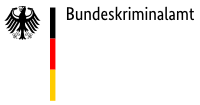
Comparative analysis of glass fragments typically begins with microscopic examination. In this step, trace particles are selected for further comparative analysis. In most cases comparison material must also be prepared for the measurements. This is followed by determination of the refraction index using a particular method optimized for application to forensic casework, which provides a good discrimination between a large number of glasses from different sources.
 The principle of comparative glass analysis with the aid of laser ablation ICP-MS
The principle of comparative glass analysis with the aid of laser ablation ICP-MS
In addition to this, glass fragments can be compared by applying modern methods of elemental analysis. Every material has its own specific elemental composition, which can be used to compare exhibits with each other. This “elemental fingerprint” can be detected by laser ablation inductively coupled plasma mass spectrometry (laser ablation ICP-MS). A high-energy laser beam vaporizes a miniscule quantity of glass, creating a laser crater. The inductively coupled plasma (ICP) with temperatures of approximately 7,000°C decomposes the vaporized material to atoms and subsequently to ions, which can be detected by the mass spectrometer. The decision whether a glass fragment recovered from the trousers of a suspect could have come from the windscreen depends upon the similarity of the element profiles.
